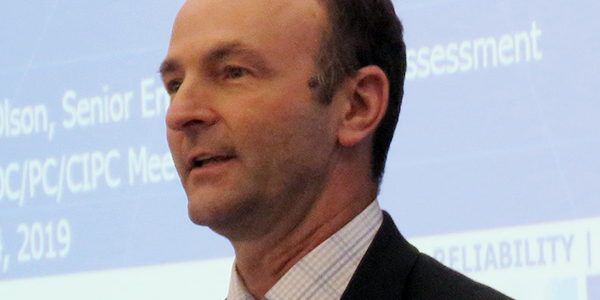The team working on NERC’s 2020 Summer Reliability Assessment still expects the draft report to be ready for review by the Operating and Planning committees on May 1, even as it works to incorporate the disruptive impact of the COVID-19 pandemic into its projections.
“Everything is driving toward a June 1 release of the report,” said Mark Olson, NERC senior engineer, in this week’s conference call of the Reliability Assessment Subcommittee (RAS). “We wouldn’t want to go a whole lot later, but if necessary, I think we could look to do that, if we feel there are some updates that will be missing if we don’t change it.”
The RAS will also provide the draft report to the new Reliability and Security Technical Committee for review at the same time it goes to the PC and OC.
COVID-19 Complicates Drafting Efforts

Discussing the challenges of this year’s report, Olson told the subcommittee that nearly all of the assessment’s key findings have been affected by the pandemic in some way. Indeed, one goal for the drafting team has been to keep discussion of the coronavirus from overwhelming the report.
The most obvious impact is the investments by registered entities in protective equipment for critical employees, along with revised operating guidelines to allow for separation and sequestration of workers that could cause efficiency to drop. But additional direct and indirect shocks are expected to ripple through the ERO ecosystem, including disruptions to fuel supply chains, restrictions on movement of personnel needed for critical maintenance efforts and reduced ability to provide mutual aid in the upcoming hurricane season.
“One area that I believe the ERO and the trades are interested in is pushing the priority … of being a critical infrastructure and critical work force,” Olson said. “We should have access to … priority for testing, priority for [personal protective equipment] and priority for people movement. Those are the kind of things that I would think belong up here.”
Team Urged to Focus on Priorities
RAS members acknowledged that the pandemic will likely continue through the period covered by the assessment and warned against “burying the lede” of a major ongoing crisis. However, they also noted that the reliability assessment is intended to provide an overall look at all reliability issues, and there is no reason for a single topic to crowd out all other upcoming issues — especially because NERC has multiple channels for disseminating coronavirus-related news.
At the same time, staff noted that even without dwelling on specific COVID-19 responses in the assessment, the impact will inevitably be pervasive. For example, many of the projections in the assessment were created prior to the outbreak and contain assumptions based on previous years. These can be redrawn to indicate the impact of the pandemic, but members urged the team to emphasize the difficulty of predicting customer behavior in such extreme circumstances with limited data.
“You have some indication from Italy and [Electric Power Research Institute] studies based on March, maybe — you see some drop in the load and the load shapes have changed,” said Phil Fedora of Northeast Power Coordinating Council. “But nobody really knows what’s going to happen this summer if you have hot, humid weather, which is still one of the biggest drivers for what causes the load forecast to be higher than you would expect it to be.”
Other participants agreed that the assessment must acknowledge the difficulty of making predictions in the current climate. Readers will be better served by a report that warns them of the dangers ahead — including the inability to know for sure what is coming next.
“You can flip on the news these days and states in the U.S. are arguing what is the proper time to open up … [but] also you hear states that are opening up early are now at risk of a second wave of the coronavirus,” said Andreas Klaube of NPCC. “So there’s a lot of uncertainty — and I think that can’t be underestimated — that drives a lot of the uncertainty that we’re facing here, and things can change week by week or even by the day. Highlighting that regulatory and government uncertainty might be prudent to add here.”



